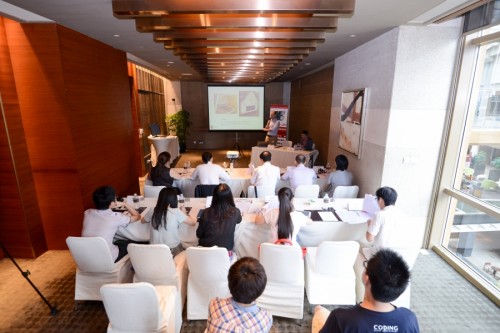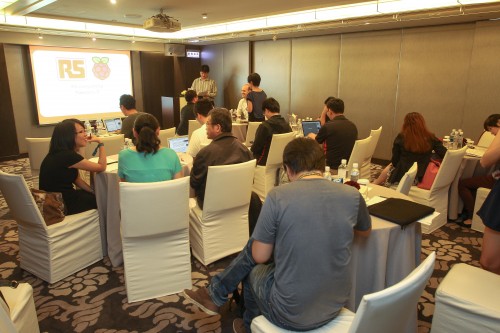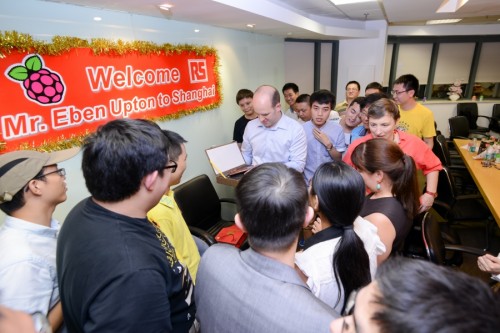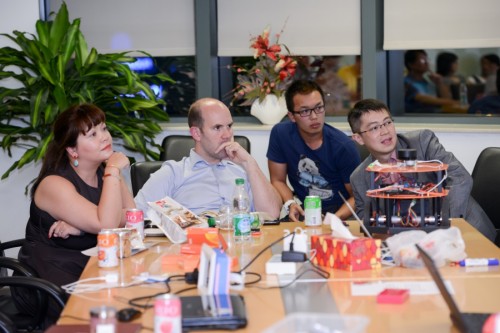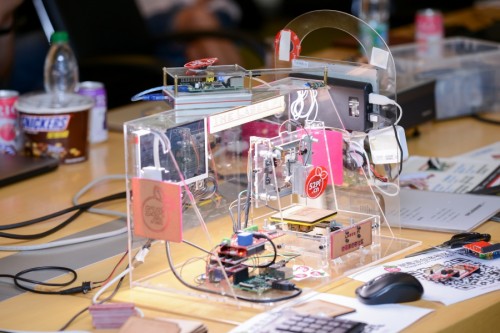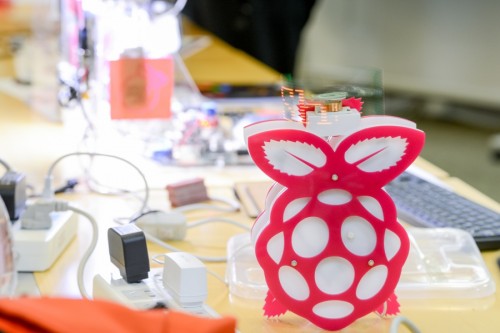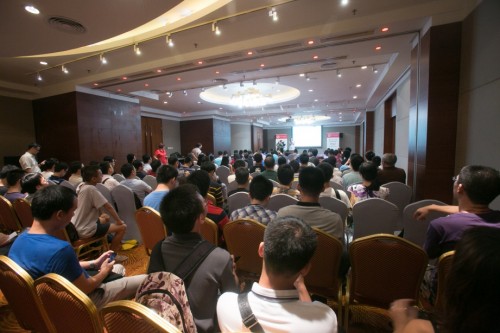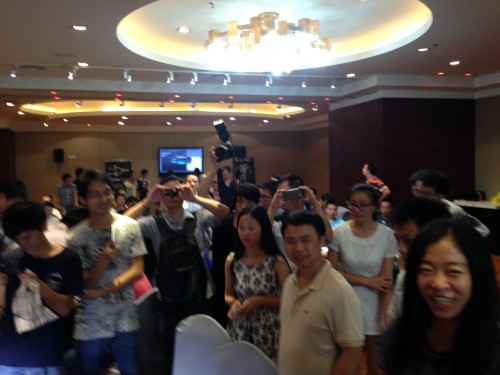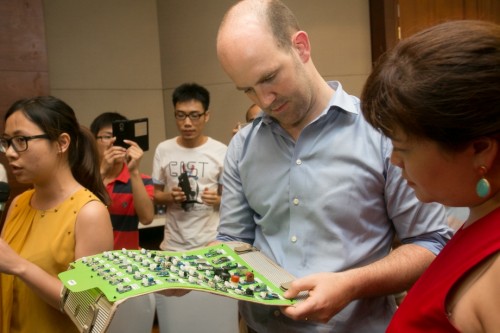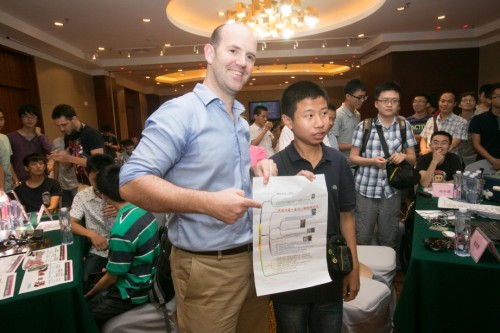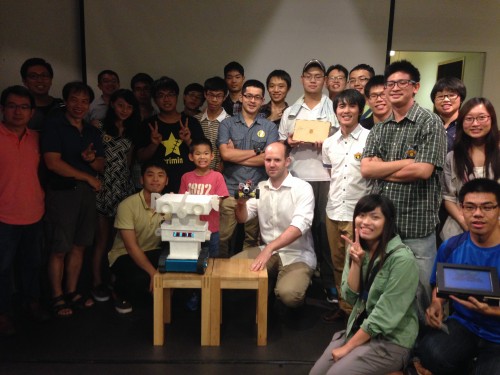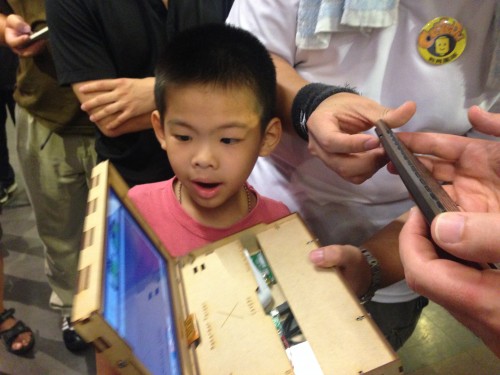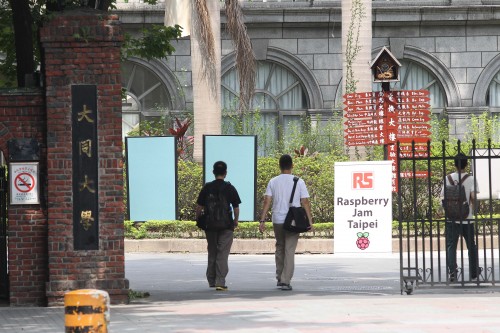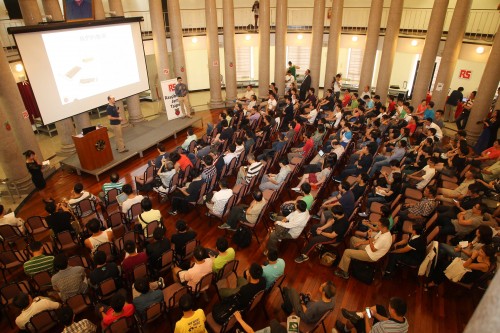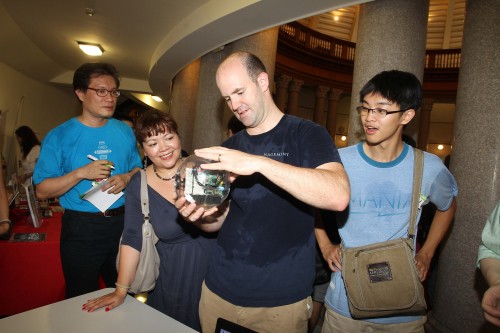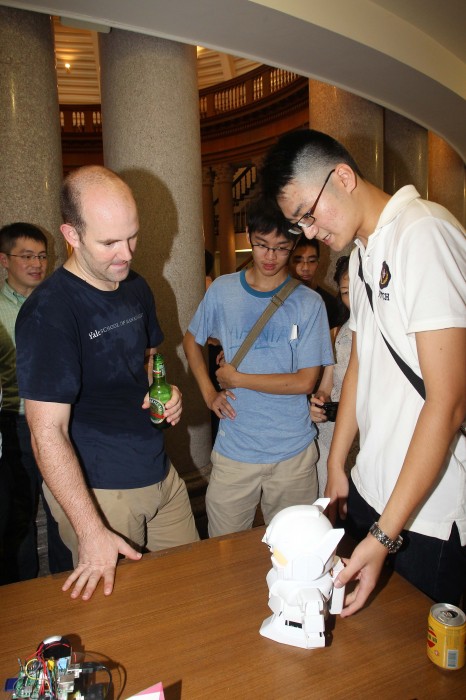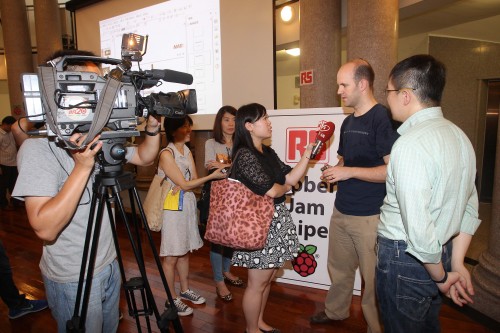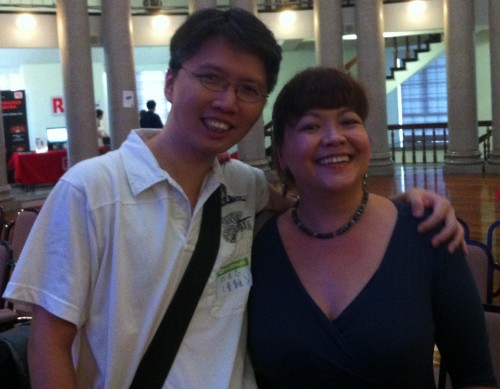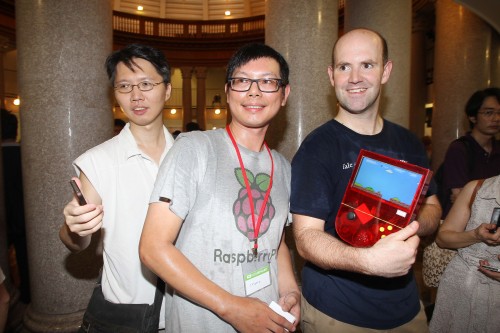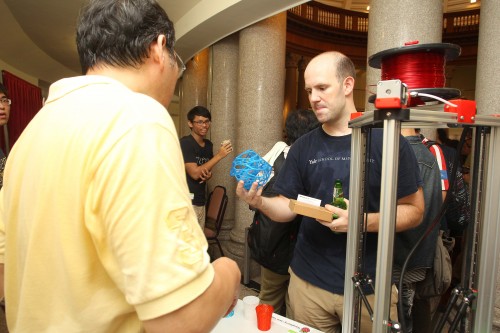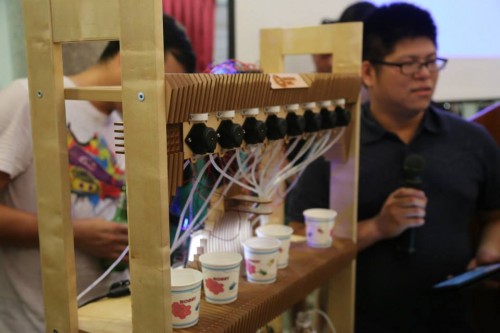|
Welcome to another Good e-Reader Comparison Video! Today, we take a look at the flagship tablet that has been leading the charge for Windows 8 adoption, the Microsoft Surface Pro 3. We compare the overall Windows 8 reading experience on a tablet whose primary focus is reading digital books, newspapers, graphic novels and eBooks – the Kobo Arc 10 HD. The premise of this video is not to pick a clearly defined winner, but to open up the same content on each device and show how they are different from each other. Obviously Microsoft has a bit of an advantage with being able to run legacy apps, so you can use the full version of Microsoft Office, Adobe Master Collection, or even League of Legends. No, this comparison is to look at how Windows and Android handle the same content, and this should provide a more immersive comparison that has trickle down effects into other aspects of the tablets.
Microsoft Surface PRO 3 vs the Kobo Arc 10 HD is a post from: Good e-Reader |
A Semi-automated Technology Roundup Provided by Linebaugh Public Library IT Staff | techblog.linebaugh.org
Tuesday, August 26, 2014
Microsoft Surface PRO 3 vs the Kobo Arc 10 HD
Kobo Aura H20 – Reading in the Dark Test
|
Kobo has formally unveiled their brand new 6.8 inch Aura H20 e-reader. The big selling point behind this is the waterproof nature and the large vibrant screen. Kobo has been slowly refining their front-light technology that allows you to read in low light conditions or absolute darkness. Today, we look at the various degrees of illumination to give you a sense if this device is right for you. Reading in the dark has never been easier with the Kobo Aura H20. It has a number of brightness levels that can be customized, depending on your environment. It is important to note that the light is not emitting from behind the screen, like computer monitors, laptops, smartphones or tablets do. Instead, there are five LED lights spread along the bottom of the bezel and shine light across the screen. Nook pioneered this technology but Amazon and Kobo really refined it. In this video, we demonstrate the entire range of illumination to give you an accurate portrayal of the pros and cons of the Aura H20.
Kobo Aura H20 – Reading in the Dark Test is a post from: Good e-Reader |
Full Review of the Kobo Aura H20
|
Kobo has an obsession on what constitutes the perfect e-reading experience and they have been feverishly working towards this ideal. They have slowly been evolving their product line to fall in line with the quintessential five B's of bookselling; Bath, Backyard, Bedroom, Bus and Beach. The brand new Kobo Aura H20 e-Reader is the most complete device the Toronto based company has ever released. It was designed to be able be completely submerged in five meters of water, for up to fifty minutes, which finally allows users to safely read in the bath and beach. We spoke to Kobo CEO Michael Tamblyn in prelude to the formal unveiling and he mentioned that "The H20 follows the same design principles of the Kobo Aura. When the Aura first came out we expected that the premium 6.8 inch screen would only account for 2% of our companies sales, and within a few months it captured 25%. We are hoping to replicate the success of the Aura with the H20, which is slimmer, lighter and can be used on vacations." Hardware
The Kobo Aura H20 features a six inch e-ink Carta touchscreen display with a resolution of 1430×1080. Carta Imaging Film offers a 50% improvement in contrast ratio over previous generation of e-Paper displays. This allows for faster page turns and the ability to turn pages in a digital book, without the need of constant screen refreshes. The Aura HD and Aura H20 e-readers are not using a capacitive touchscreen display, which means it does not have pinching and zooming capabilities. Instead, it is employing Infrared technology from Neonode. One of the main benefits of the H20 e-Reader is the ability to enjoy eBooks, graphic novels or newspapers in lowlight conditions or complete darkness. Unlike a smartphone or tablet that has an LCD screen that emits light from behind a layer of film, the H20 has five LED lights on the bottom of the bezel. It shines upwards, insuring even light distribution and makes it easier to devour books without eye strain. Kobo has managed to attain the prestigious IP67 certification for their first waterproof device. It will basically allow users to have the e-Reader completely submerged in five meters of water for an hour, with the MicroUSB and MiscroSD ports closed. This makes the H20 the most complete, well-rounded device the market and eliminates the need to send off your reader to a third party and pay over $60 for them to waterproof it for you. During underwater tests I found that even completely submerged in water, you can still turn pages and access the core functionality. Underneath the hood is a Freescale i.MX507 1GHZ processor and 512MB of RAM. It ships with 4GB of internal storage and can be expanded further via a MicroSD for up to 32GB of additional memory. Basically, if you max your storage, you can store over 30,000 books on your e-Reader and not have to charge it for up to two months. On a hardware level my only complaint is that the screen is not flush with the bezel like it is on the Kobo Aura or the Tolino Vision. In a world of tablets and smartphones, it could be a weird adjustment for people go from that to a sunken screen. Software
The Kobo Aura H20 features a home screen that is heavily dynamic in nature. If you create a new bookshelf, buy an eBook or start reading a newspaper an entry will be automatically created right on the home screen. This enables users to be able to quickly jump into reading digital content, without the need of jumping through a lot of hoops. Underneath the book title on your home screen a percentage rating is generated, depending on how far you are in the book. Kobo has added a sync button right on the home screen and this button accomplishes a few things. If you purchase an eBook on your smartphone or tablet via the Kobo App, all of the content will automatically be downloaded to your H20 if you hit the sync button. Additionally, it is also used to query the Kobo servers for any potential firmware updates and prompt you for an upgrade. One of the things I liked about the new sync system is the visual cues it provides. Prior models of Kobo would just have a loading animation, with no indications on what it was doing behind the scenes. Now, when it syncs it gives text based updates on the top. By default, it will say it is syncing reading life, awards and firmware updates.
I noticed a number of small bugs that are easily solved by tweaking some options in the setting menu. By default, the H20 will prompt you to wipe off the screen if it becomes wet. This notification appears when you load up a PDF file and does not disappear. Likely, this is occurring because of the oil in your hands, but you can turn it off by going into "Reading Settings" and deselecting the Water Notification flag. Also, on the main screen you see curated content by Kobo, recommended reads and eBooks they recommend. There is an option to turn this off, but once it is disabled it is impossible to re-enable it. Finally, Kobo has maintained their Reading Statistics system on the home screen. This gives you a sense of progression and monitors your reading habits. There are plenty of metrics to keep track of, such as how long it takes you to read a specific page of text or the average amount of time it takes to read a book. e-Reading Experience
Kobo does an amazing job in making their e-readers appealing to both casual and hardcore users. They have plenty of advanced options that the competition simply cannot match, such as the ability to load in your own fonts. They also have a bunch of sliders that allow unparalleled flexibility in determining how much weight you want your fonts to have and configure the margins and line spaces. The Aura H20 was designed to excel at reading the two most popular electronic book formats, PDF and EPUB. They also have support for manga, graphic novels and comic books with CBR and CBZ, so users will be able to download them from the internet and easily load them on their reader. When you are reading a book, you have a number of options you can employ. Aside from font and customization options you can long-press on a word and get an instant definition of it. If you speak another language, you can look the word up in Japanese, Italian, German, Dutch, and many more. When long-pressing a word, you get an anchor that will allow you to select a single word, sentence, or entire paragraph. You can then highlight it or add a note. When you add a note, a virtual keyboard appears that allows you to manually add one. Have you ever wanted to know more about a particular character, or learn more about the world they live in? "Beyond the Book” is a program Kobo unveiled in late 2013 and is quite similar to Amazon’s X-Ray feature, Beyond the Book allows a user to find more information about part of the book, providing similar topics, books, and authors. Not all titles have the Beyond the Book, so if your specific eBook is missing it, please do not fret.
The Kobo Aura allows you to pinch and zoom to isolate specific bodies of text, but this model does not have this feature, primarily due to the fact is not using a capacitive touchscreen. Instead, you have to double tap the center of a specific document to enable zoom. A small bar is on the bottom of the screen, which you can think of your magnification settings, this allows you to manually configure the zoom level. While you are zoomed in there is a preview pane in the top left hand corner. You can think of this pane as a snapshot of the specific page you are on, which helps orientate on the exact position in the PDF. If you have zoomed in and want to maintain your settings, you can flip to the next page and your exact zoom level is still preserved. Many PDF files are massive in size and eclipse 150MB, such as eTextbooks, role playing games and medical journals. The Kindle Paperwhite e-reader really buckles under the weight and but the H20 handles them like a boss. We normally load in a 50 MB science journal and a 189 MB D&D Monsters Manual, both of them handled them fairly well. When you start amassing a large library of eBooks, collection management becomes a big issue. Kobo has a system that allows you to create custom bookshelves, where you can select the eBooks you want to include. For example, you can create a bookshelf to house all of your Fantasy and Science Fiction titles and another for Literary Fiction. When it comes to buying books, Kobo simply has the most massive ecosystem in the world. They have over 4 million digital titles, which not includes eBooks but also kids' books, graphic novels, newspapers, magazines, manga and comics. They officially sell this content in over 84 countries and if you don't live in a supported country, you are automatically sent over to the one closest to where you reside. I found the Kobo Store used to not load all of the cover art and text based assets quickly in prior models, the H20 loads everything very quickly. Wrap up
The Kobo Aura H20 is the byproduct of multiple generations of e-readers, and the constant refinement of software and hardware. The H20 is considered to be the most complete e-Reader Kobo has ever produced. When it comes to freedom, the H20 provides it in spades. Not having to fret over spilled coffee or getting sand stuck under the screen is liberating. You can read it just as easily in direct sunlight as you can in complete darkness, e-reading technology just took a giant leap forward. Kobo sometimes receives a lot of flak for their abysmal customer service when it comes to hardware repairs or errors in purchasing books. We have seen thousands of comments on our news site about most people experiencing the same type of errors, with no resolution in sight. The company has tried very hard over the years to simplify the process, and are closer than ever with their live chat and 1-800 numbers, but they still have a long way to go. In the end, if you have a Kobo Glo, Kobo Touch or even a Kobo Aura, I would recommend you upgrade to the H20. There isn't any new e-ink technology on the horizon that you should be saving yourself for, and the only new thing that will be out next year is a Kobo e-Reader that will likely have Wacom support and be bundled with a stylus for note taking. The Kobo Aura H20 comes out October 1st in Canada and the United States for $179. It comes out at the same time in the Uk costing £139.99 and in Europe for €179.00. PROS Reads many popular eBook formats CONS Beyond the Book not available in most modern best sellers Rating: 8/10
Full Review of the Kobo Aura H20 is a post from: Good e-Reader |
Huawei Deems Tizen Doomed and Windows Phone Unprofitable
|
While it may be a name unfamiliar to many in North America, Huawei Technology Co. is quickly becoming a threat to Samsung as the world’s biggest smartphone manufacturer. Based in China, the company is seeing rapid growth as they market their smartphones to emerging markets in Africa, the Middle East, and Latin America. While their business began by supplying networking equipment, they now enjoy major telcom operators as clients –making their move to smartphones very logical. So what platform do they prefer to use? It looks like Android is really their only option. Huawei’s Chief of Consumer Business Affairs, Richard Yu, described their experience with Tizen as “been there, done that, don’t like it.” Even beyond those remarks, he also noted that he feels the Tizen platform stands no chance at being successful. He wasn’t much sunnier about his feelings on Windows Phone, with his statement that: “We have tried using the Windows Phone OS. But it has been difficult to persuade consumers to buy a Windows phone. It wasn’t profitable for us. We were losing money for two years on those phones. So for now we’ve decided to put any releases of new Windows phones on hold.” The company has voices that they are not pleased with the position they have been put in, with no choice but to default to Android –but unless they decide to change their minds and develop an ecosystem of their own, that is what they are left with. Good news for Android, possible bad news for Apple.
Huawei Deems Tizen Doomed and Windows Phone Unprofitable is a post from: Good e-Reader |
Kindle Paperwhite 2 vs Icarus Illumina HD Comparison Review (+Video)
| The Kindle used to be the only option for those that wanted an E Ink ebook reader to read ebooks purchased from Amazon without having to strip DRM or hack an Android-powered ereader like the Nook Touch or Sony PRS-T1 to install the Kindle app. Now there are a few E Ink ebook readers on […] |
URL: http://feeds.the-ebook-reader.com/~r/feedburner/cmWU/~3/Z4NR35EMxWU/
BlackBerry Roadmap Hints at Product Timelines
|
Despite our best estimates, BlackBerry has survived in the mobile world far longer than expected –which is fortunate for fans of the brand. We heard recently that there are new smartphones headed our way, including the unusual looking Passport (with a large, boxy style, and full QWERTY keyboard). It wasn’t until now though, that we learned exactly when we can expect them to hit the marketplace. It appears that Passport (“Windermere”) and the Porsche Design P’9983 (“Khan”) should be ready to purchase in the third quarter of 2014 –which may even mean in September. For those who can’t get enough of the old-style design, the Classic smartphone will be out with the BlackBerry 10.3.1 update in the 4th quarter of this year.
The roadmap also makes it clear which devices aren’t going to survive, with everything but the Z3 and 9720 headed to the graveyard by the end of the year. A third-quarter 2014 launch date may be very wise, with Apple and Motorola both slated to deliver new hardware the same month; waiting much longer may have persuaded BlackBerry loyalists to switch in the meantime.
BlackBerry Roadmap Hints at Product Timelines is a post from: Good e-Reader |
Onyx Boox T68 vs Icarus Illumina HD Comparison Review (+Video)
| The Onyx Boox T68 and Icarus Illumina HD are both among the first E Ink ebook readers to run Android and openly allow the installation of Android apps. Since I just got done reviewing each of them, there’s no better time for a comparison review. Below is an outline of the main similarities and differences […] |
URL: http://feeds.the-ebook-reader.com/~r/feedburner/cmWU/~3/2A8lXLyJk10/
The Latest News from Amazon and B&N
|
Welcome to another Good e-Reader Video! Today, we take a look at the top stories from last week from Amazon and Barnes and Noble. We have a brand new format for our video news, let us know what you think.
The Latest News from Amazon and B&N is a post from: Good e-Reader |
Survey says: About half of audiobook listeners use the library/OverDrive as their main source
|
Check out the full survey results, here: http://bookriot.com/2014/08/25/great-audiobook-survey-results/ Do you listen to audiobooks? Have you noticed your students or patrons following particular audiobook habits? Let us know in the comments below!
|
URL: http://feedproxy.google.com/~r/DigitalDistributionBlogOverdrive/~3/2HZhmAWVehk/
China press and community tour
| As you might have spotted, if you follow us on Twitter, Eben and I spent the last week and a bit touring China, meeting the Raspberry Pi community there and giving interviews to the press, with some sterling organisational help from our friends at RS Components. (A special and huge thank you to Eric Lee, without whom we’d have been absolutely stuffed. Mostly with delicious pork confections and noodles, but stuffed nonetheless.) Here’s what we got up to. First up, there were a lot of press conferences to give, with help from the excellent William, our simultaneous translator; after a week of doing this, we ended up with more than 100 pieces of media being written or recorded about Raspberry Pi across China. This one, in Shanghai, is pretty typical.
We noticed that the tech press in China is incredibly well-educated; a lot of these journalists trained as engineers and then moved into publishing. (And everywhere we went, at least 50% of the technical journalists were women – something I wish we’d emulate in the west.)
We went to a Raspberry Jam in Shanghai, held at RS Components’ offices. We met some great people (Kevin Deng and the gang from 52pi.cn, a Chinese website dedicated to the Raspberry Pi, actually followed us on to the next event in Shenzhen as well), who’d built some amazing projects.
The robot on our desk is LIDAR (laser radar)-equipped, from DFrobot. We’re listening to a talk about open source from David Li, one of China’s most famous open source pioneers. Eric Lee from RS is on the right.
This laser-etcher is one of the projects the 52pi gang had brought along; you can buy lasers for this sort of project off the shelf in China, where the integrity of your eyeball is your own responsibility. I’ve got a couple of coasters with our logo on them on my desk at the moment, made using this machine.
Jackie Li gave an amazing talk about the projects he’s made at home – cameras streaming to remote screens, a simplified media centre for his grandma, robots – and this excellent LED persistence of vision device for displaying reminders in the kitchen.
We flew out next to Shenzen, where hundreds of people turned up for a Raspberry Jam, and where we did more press conferences and more interviews. Before we left for China, I’d been worried that the community base would be smaller than we’re used to. It turned out to be almost too large for us to deal with in the time we’d had allotted in each location.
It got a bit hard to move in Shenzhen for all the people wanting a photo. We saw some great presentations (one of which, from Martin Liu, who describes himself as a living-room maker, demonstrated the work we sponsored to get the XBMCmenu working in new fonts – including Chinese. It’s at the back of the photo here, behind all the people with cameras.)
We met a lot of Shenzhen makers who are also entrepreneurs; on the left here is Zoe from Seeed Studio. Eben’s holding some sensors from their Grove project, which works with Raspberry Pi.
This young gentleman had a robot to show us, controlled with Scratch (on the desk to the right), and a poster for Eben about Pi-controlled brewing. He was terribly shy, and I really wanted to give him a hug, but suspected that might have made matters worse.
We managed to get about an hour at the enormous electronics market in Shenzhen with Eric, where we had some fun looking at components and working out if we could lower the bill of materials cost in the Pi itself. Unfortunately, it’s so big you need at least a week to work your way around the place; we plan to return.
Next stop, Taipei. We started off at Noise Kitchen, where we met a group from CaveDu, a local hacker group. The robot in the middle was being prepared for the next day’s Jam at Tatung university – the display shows how many likes CaveDu’s Facebook page has.
These guys hung around for HOURS to meet us, for which we’re very grateful; our plane was delayed six hours, and we didn’t get there until nearly 11pm. I met a home-made laptop with a removable wireless keyboard (a clever way to get around the hinge problem), and made a new best friend.
First thing the next morning, we headed out to Tatung university.
We were expecting a few tens of people, having failed to learn our lesson from Shenzhen. More than 250 people turned up.
Among the crowd was my new best friend from the night before. We do not have a language in common, but we bonded over high-fives and fist-bumps.
It was HOT; about 33C in the shade. And unfortunately, the air conditioning in the building got turned off an hour or so in, so we get damper and damper as these photos progress and the temperature climbs well above 40C. We met a self-balancing robot in a hamster ball.
We bumped into an old friend. (The beer is there for thermal reasons.)
Eben got interviewed, sweaty, by Taiwanese TV.
And this is my other new best friend, Liang Chih Chiang, who gave a presentation (which he’s very kindly translated for me so you can all read it) about our community and social media – a subject that’s very close to my heart, for obvious reasons.
We saw some amazing projects, like this gaming machine…
…this Pi-powered 3d printer…
…and this, which I was never able to get close enough to to find out what it does. I think it might be a musical instrument. Or possibly a cocktail machine.
Any suggestions, anybody? We had a wonderful, exhausting, wonderful time. Thanks so much to everybody who came to see us; and an especial thanks to Eric, Desiree, Soo Chun, Katherine and the rest of the RS gang, who looked after us so well. We hope we’ll be back in a year or so – and until then, here’s a picture of a bit of press that I can’t read, but that’s made me laugh more than anything else that’s been published about us this year.
|
URL: http://www.raspberrypi.org/china-tour/?utm_source=rss&utm_medium=rss&utm_campaign=china-tour
Master Photoshop Basics With Our Newest Tutorial
| Photoshop is a powerful application for editing photos, graphics, and other images. This tutorial will help get you started with Photoshop and give you tips for getting the best results with your images. |
URL: http://blog.gcflearnfree.org/2014/08/26/master-photoshop-basics-with-our-newest-tutorial/














